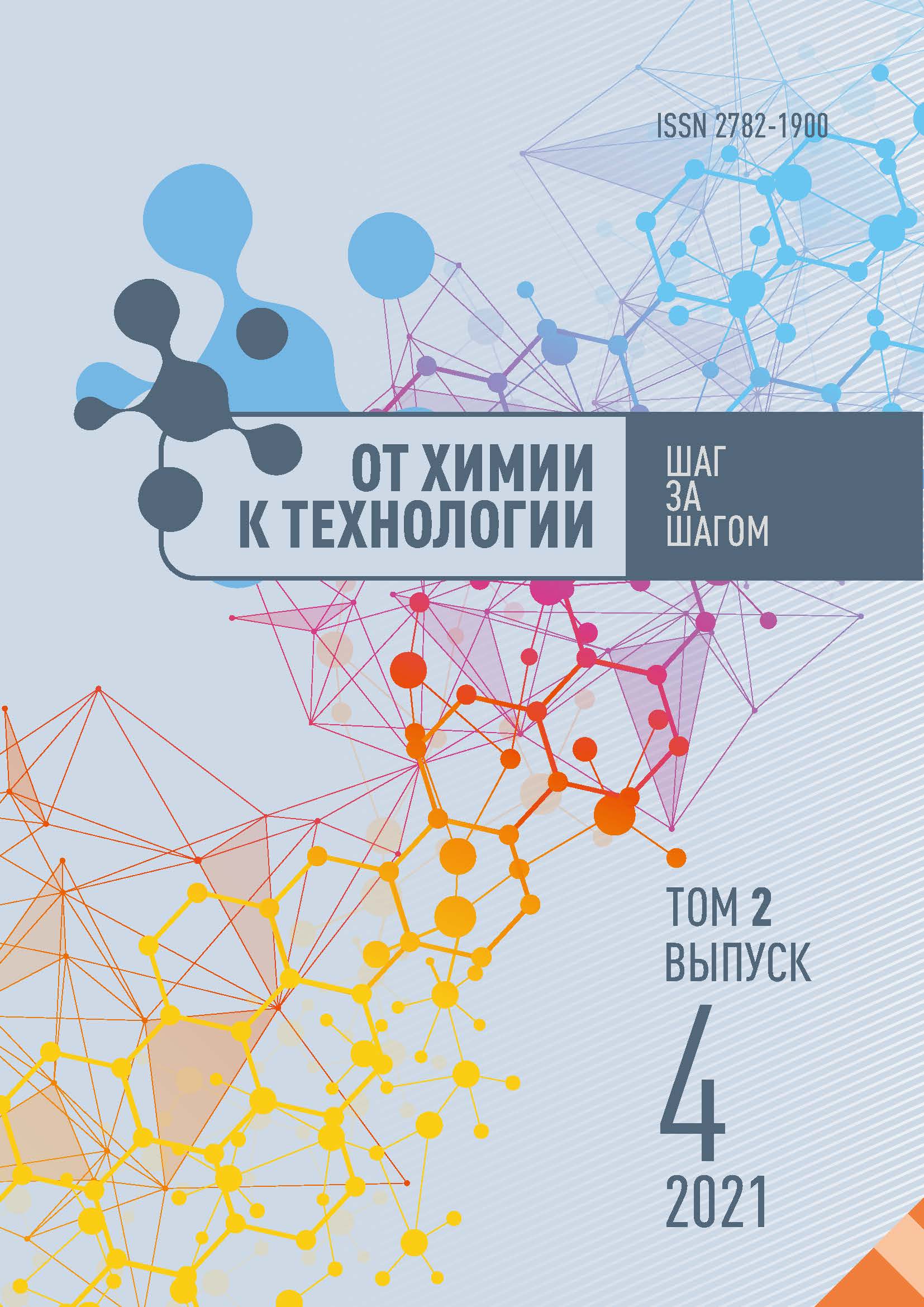Yaroslavl, Yaroslavl, Russian Federation
Yaroslavl, Yaroslavl, Russian Federation
Yaroslavl, Yaroslavl, Russian Federation
Yaroslavl, Yaroslavl, Russian Federation
Yaroslavl, Yaroslavl, Russian Federation
UDC 549.731.13
As a result of the expanding directions of application of magnetic liquids, it becomes necessary to obtain a large amount of magnetite. The most common method of obtaining magnetite is its chemical condensation, both from pure components and from iron-containing waste of machine-building industries. Magnetite obtained from waste is as high as magnetite obtained from pure components. In addition, the cost of such magnetite is much lower. The article describes an electrochemical method for obtaining magnetite for wastewater treatment of electroplating production from the waste of cutting sheets of steel. A solution of sodium chloride was chosen as the electrolyte. The article presents the main stages of obtaining electrochemical magnetite, the results of measuring the saturation magnetization of samples of dispersed magnetite. The measurements were carried out at room temperature using a vibrating magnetometer in magnetic fields up to 1 Tl. We obtained the Mossbauer spectrum of an electrochemical magnetite sample. Magnetite, obtained by the electrochemical method, was used for the treatment of electroplating production washing wastewater as an adsorbent of copper ions. The paper presents the process of magnetite adsorption of copper ions and the scheme of the purification method. Studies of adsorption treatment of electroplating wastewater from copper ions show the high efficiency process level up 92.0-98.4%.
magnetite, waste from cutting steel sheets(chips), magnetic liquid, adsorption wastewater treatment
1. Berkovskiy B.M., Medvedev V.F., Kraskov M.S. Magnitnye zhidkosti. M.: Himiya, 1989. 240 s.
2. Uheida A., Iglesias M., Fntas C., Hidalgo M., Salvado V., Zhang Y., Muhammed M. Sorption of palladium (ΙΙ), rhodium (ΙΙΙ), and platinum (ΙV) on Fe3O4 nanoparticles. J. Colloid and Interface Sci. 2006. V. 301. N 2. R. 402-408.
3. Egunova O.R., German S.V., Vrabie Ya.A., Shtykov S.N.. Sintez monodispersnogo magnetita. Izv. Sarat. un-ta. Nov. ser. Ser. Himiya. Biologiya. Ekologiya. 2015. T. 15. Vyp. 4. S. 10-14. DOI:https://doi.org/10.18500/1816-9775-2015-15-4-10-14.
4. Marnautov N.A., Komissarova L.H., Tatikolov A.S., Larkina E.A., Elfimov A.B., Vasil'kov O.O. Razrabotka optimal'nogo sposoba polucheniya odnorodnyh po himicheskomu sostavu i razmeram nanochastic magnetita dlya biomedicinskih celey. Uspehi sovremennogo estestvoznaniya. 2017. № 6. S. 23-27.
5. Kalaeva S.Z., N.L. Markelova, V.M. Makarov. Poluchenie magnetita vosstanovleniem zhelezosoderzhaschih othodov. Ot himii k tehnologii: shag za shagom. 2021. T. 2. № 1. S. 79-85. DOI:https://doi.org/10.52957/27821900_2021_01_79.
6. Patent RF № 2750429. Sposob polucheniya magnetita / Bibaneva S.A., Pasechnik L.A., Skachkov V.M. Opubl. 28.06.2021. Byul. № 19.
7. Patent RF № 2433956. Sposob polucheniya magnetita / Krauze E., Rem V. Opubl. 20.11.2011. Byul. № 32.
8. Patent RF № 2461519. Sposob polucheniya magnetita s razvitoy poverhnost'yu / Ikaev A.M., Agaeva F.A., Avguzarova V.A., Esieva L.K., Dzaraeva L.B. Opubl. 20.09.2012. Byul. № 26.
9. Patent RF № 2610506. Sposob polucheniya nanochastic magnetita (varianty) / Grishechkina E.V., Dosovickiy A.E., Mihlin A.L. Opubl. 13.02.2017. Byul. № 5.
10. Gordeev B.A., Maslov G.V., Okhulkov S.N., Osmekhin A.N. On Developing a Magneto-rheological Transformer That Operates in Orthogonal Magnetic Fields. Journal of Machinery Manufacture and Reliability. 2014. V. 43. N 2. R. 99-103. DOI:https://doi.org/10.3103/S105261881402006X.
11. Belyaev E.S., Ermolaev A.T., Titov E.Yu., Tumakov S.F. Magnitoreologicheskie zhidkosti: tehnologii sozdaniya i primenenie: monografiya. M.: Nizhegorod. gos. tehn. un-t im. R.E. Alekseeva, 2017. 94 s.
12. Hoang Ch.T., Yurmazova T.A., Vaytulevich E.A. Magnetit s modificirovannoy poverhnost'yu dlya vodoochistki. Izvestiya Tomskogo politehnicheskogo universiteta. Inzhiniring georesursov. 2019. T. 330. № 8. S. 163-172. DOI:https://doi.org/10.18799/24131830/2019/8/2222.
13. Lebedev A.V., Lysenko S.N., Gileev V.G. Magnitnaya zhidkost', stabilizirovannaya polimetilsiloksanom, ostaetsya zhidkoy bez nesuschey sredy. Kolloidnyy zhurnal. 2020. T. 82. № 3. S. 339-345. DOI:https://doi.org/10.31857/S0023291220030064.
14. Rotinyan A.L. Tihinov K.I., Shoshina I.A. Teoreticheskaya elektrohimiya. L.: Himiya, 1981. 424 s.
15. Ulig G.G., Revi R.U. Korroziya i bor'ba s ney. Vvedenie v korrozionnuyu nauku i tehniku. L.: Himiya, 1989. 456 s.
16. Keshe G. Korroziya metallov. M.: Metallurgizdat, 1984. 400 s.
17. Zaharova I.N., Nikolaev V.I., Shipilin A.M. Ob ocenke razmerov nanochastic s pomosch'yu effekta Messbauera. Zhurnal fiziki tverdogo tela. 2001. T. 43. Vyp. 8. S. 1455-1457.
18. Chan Tuan Hoang, Yurmazova T.A., Vaytulevich E.A. Magnetit s modificirovannoy poverhnost'yu dlya vodoochistki. Izv. Tomskogo politehn. un-ta. Inzhiniring georesursov. 2019. T. 330. № 8. S. 163-172. DOI:https://doi.org/10.18799/24131830/2019/8/2222.







